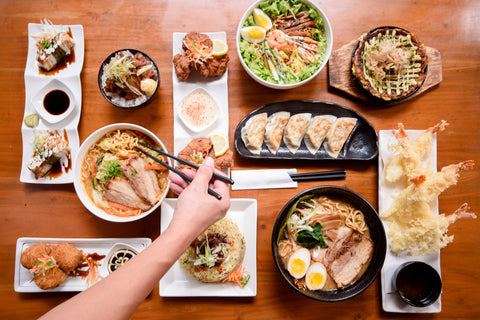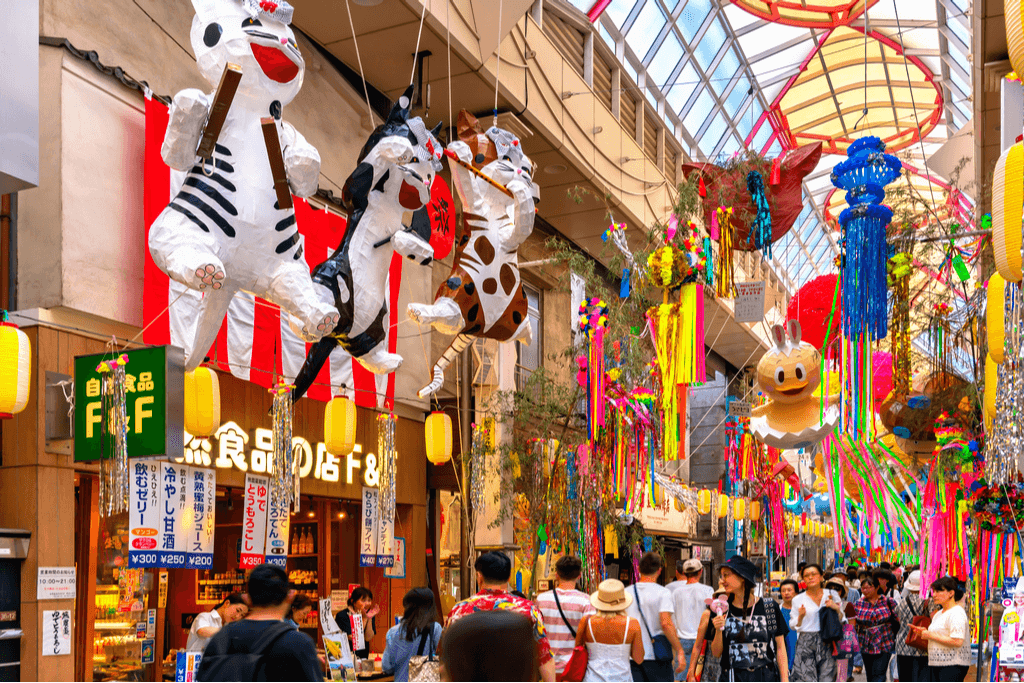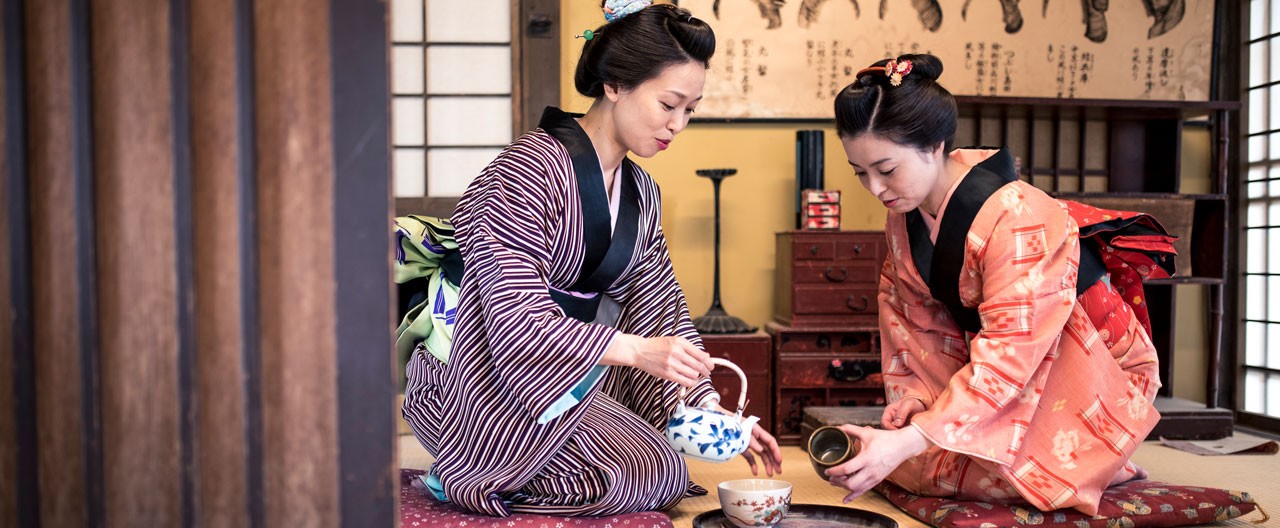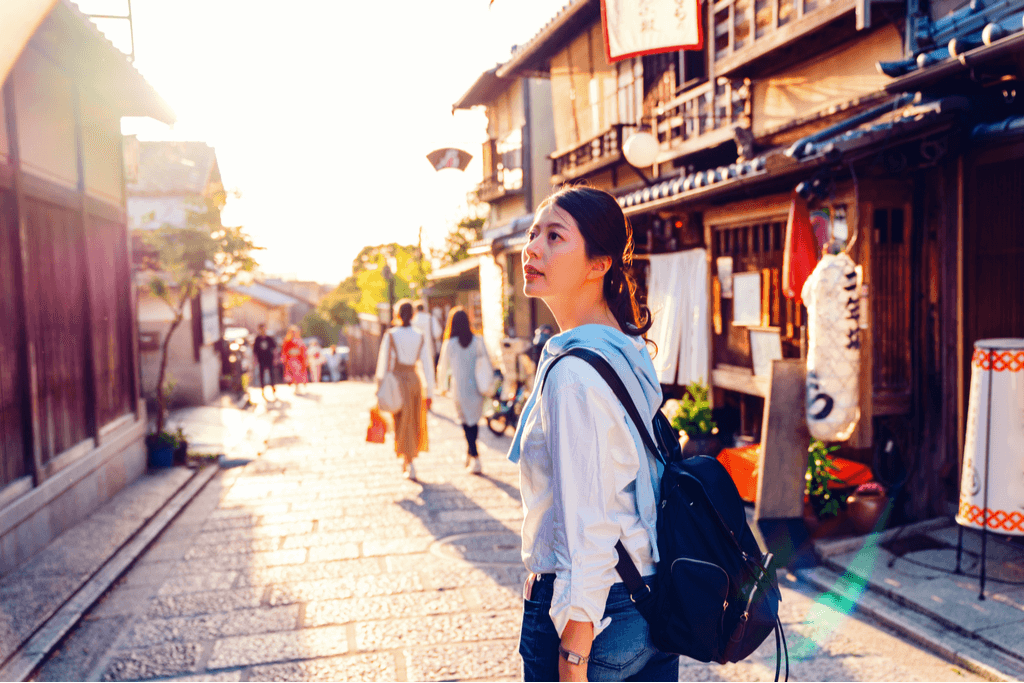Win a Free Trip to Japan!
Experience cherry blossoms and ancient temples
Japan boasts a unique and captivating lifestyle that seamlessly blends tradition and modernity. From the exquisite flavors of traditional cuisine to the serene practices of mindfulness and Zen, each aspect of Japan’s culture contributes to a harmonious way of living. The importance of nature is evident in everyday activities, while community values strengthen social bonds. Moreover, innovative technology never overshadows the rich heritage, proving that the Japan lifestyle is a perfect balance of old and new. Explore these beautiful aspects to appreciate the depth and richness of living in Japan.
Traditional Japanese Cuisine and Its Significance
Traditional Japanese cuisine, known as washoku, plays a pivotal role in the Japan lifestyle, reflecting the harmony between nature, culture, and health. Characterized by its seasonality, presentation, and balance, washoku emphasizes the importance of fresh, local ingredients. Here’s why it holds such significance:
- Seasonal Ingredients: Japanese cuisine utilizes ingredients that reflect the changing seasons, promoting a deep connection to nature and a sense of time. This seasonal focus not only enhances flavor but also aligns with the concept of shun, or eating at the peak of freshness.
-
Health Benefits: Known for its healthiness, traditional Japanese dishes often contain vegetables, fish, and rice, leading to a balanced diet that supports longevity. Key benefits include:
- Low in saturated fats
- High in omega-3 fatty acids
- Rich in vitamins and minerals
- Cultural Tradition: Meals in Japan are steeped in tradition, ranging from family gatherings to festivals. These moments foster community ties and showcase the rich cultural heritage of the country.
- Aesthetics: Presentation plays a crucial role in washoku. The arrangement of food on plates is an art form, enhancing the dining experience and embodying the Japanese aesthetic principle of simplicity and beauty.
In summary, traditional Japanese cuisine is more than just food; it encapsulates the essence of the Japan lifestyle, where nature, health, culture, and aesthetics interweave seamlessly.

Simplifying Life with Minimalism in Japanese Culture
Minimalism plays a vital role in the Japan lifestyle, emphasizing simplicity and functionality. This philosophy resonates deeply within various aspects of Japanese culture. Here are some key elements that spotlight minimalism:
- Kanso: The principle of simplicity in design and life, encouraging the removal of clutter and unnecessary items.
- Wabi-Sabi: An aesthetic that finds beauty in imperfection, celebrating the natural cycle of growth and decay.
- Space Utilization: Japanese homes often embrace smaller living spaces, promoting efficient organization and minimal furnishings.
Benefits of Minimalism
- Mental Clarity: A clutter-free environment leads to reduced stress and enhanced focus.
- Time Efficiency: Less time spent on maintenance allows for more moments dedicated to family and leisure.
- Financial Freedom: Minimizing possessions alleviates financial burdens associated with buying and maintaining excess items.
Comparison: Japan Lifestyle vs. Western Approach
| Aspect | Japan Lifestyle | Western Approach |
|---|---|---|
| Focus on Material | Less is more; quality over quantity | Accumulation of possessions |
| Space Utilization | Small, efficient homes | Larger, often cluttered homes |
| Cultural Values | Harmony with nature | Individualism and excess |
By incorporating minimalism, the Japan lifestyle fosters a profound appreciation for the essentials, creating a calm, serene atmosphere that enriches everyday living. This cultural philosophy invites individuals to rediscover joy in simplicity, making it a quintessential part of Japanese life.
The Role of Nature in Everyday Japanese Living
Nature holds a distinguished position in Japan lifestyle, deeply intertwining with cultural practices, aesthetics, and daily activities. The relationship between the Japanese people and their environment manifests in various forms, showcasing an unparalleled appreciation for the natural world.
Key Elements of Nature in Japanese Living:
- Seasonal Awareness: The Japanese celebrate the changing seasons through festivals, food, and customs, embodying the concept of shinrin-yoku or forest bathing. This practice encourages immersion in nature to enhance well-being.
- Gardening and Landscape: Japanese gardens, characterized by minimalism and balance, reflect nature’s beauty. Elements like stones, water, and plants are arranged thoughtfully, creating tranquil spaces for reflection.
- Architecture and Design: Traditional Japanese homes often feature sliding doors (fusuma) that connect indoor spaces with gardens, promoting a seamless flow between nature and living areas. This connection emphasizes the importance of natural light and scenery.
Comparison Table: Nature-Inspired Aspects of Japan Lifestyle
| Aspect | Traditional View | Modern Adaptation |
|---|---|---|
| Gardening | Zen gardens promoting mindfulness | Urban rooftop gardens for relaxation |
| Architecture | Homes integrating gardens | Contemporary eco-friendly designs |
| Festivals | Celebrating seasonal changes | Sustainable events focusing on nature |
Integrating nature into everyday life not only enriches the Japan lifestyle but also fosters mental and emotional well-being, illustrating the harmonious relationship between the environment and cultural identity.
The Importance of Mindfulness and Zen Practices
In the context of Japan lifestyle, mindfulness and Zen practices hold significant importance, shaping both daily routines and overall well-being. Here’s how these practices manifest in everyday life:
- Meditation: Daily meditation serves as a cornerstone for achieving mental clarity and relaxation. Many Japanese people start their day with a few minutes dedicated to quiet reflection, helping to foster a peaceful mindset.
- Nature Connection: Zen encourages a connection with nature, evident in the concept of forest bathing (Shinrin-yoku). This practice promotes spending time in natural surroundings to reduce stress, an essential aspect of Japan lifestyle.
- Mindful Eating: Japanese cuisine embodies mindfulness through its presentation and consumption. Each meal is crafted with attention to detail, enhancing the dining experience and promoting gratitude for food resources.
- Aesthetic Appreciation: The Japanese aesthetic, including elements like simplicity and beauty in imperfection (wabi-sabi), cultivates a mindful awareness of one’s surroundings, leading to heightened appreciation in everyday life.
Comparison of Mindfulness Practices
| Practice | Description | Benefits |
|---|---|---|
| Meditation | Silent reflection | Improved focus, reduced anxiety |
| Shinrin-yoku | Immersion in nature | Increased relaxation, enhanced mood |
| Mindful Eating | Conscious consumption of meals | Greater appreciation of flavors |
| Aesthetic Awareness | Noticing beauty in simplicity | Enhanced daily joy and gratitude |
Incorporating mindfulness and Zen practices into the Japan lifestyle can significantly enhance both mental health and daily enjoyment, leading to a more balanced and fulfilling existence.

Japanese Festivals and Their Cultural Impact
Japanese festivals, or matsuri, play an essential role in the Japan lifestyle. They celebrate cultural heritage, seasonal changes, and community bonds. Each festival showcases unique traditions, offering a glimpse into the rich history and values of Japanese society. Here are a few key aspects highlighting their significance:
- Cultural Preservation: Festivals help preserve age-old practices and narratives, allowing younger generations to connect with their roots.
- Community Engagement: These events foster a sense of belonging and unity among residents, as locals come together to prepare for and participate in celebrations.
- Emotional Connection: Festivals often mark significant events like harvests or seasonal shifts, enabling people to express gratitude and reflect on their environmental surroundings.
Popular Japanese Festivals
| Festival | Location | Main Attraction |
|---|---|---|
| Gion Matsuri | Kyoto | Processions and floats |
| Tanabata | Nationwide | Star-themed decorations |
| Awa Odori | Tokushima | Traditional dancing |
| Sapporo Snow Fest | Sapporo | Snow sculptures |
In essence, festivals deeply influence the Japan lifestyle by reinforcing community ties and celebrating the natural world. They invite participants and visitors alike to engage with Japan’s diverse culture, promoting social harmony and a shared sense of identity. Whether it’s a local matsuri or a national celebration, the impact of these vibrant events resonates throughout the Japanese way of life.
Art of Japanese Tea Ceremony
The Japanese tea ceremony, known as "Chanoyu," embodies the essence of Japan lifestyle through its meticulous attention to detail and deep-rooted cultural significance. It transcends mere beverage preparation, showcasing an intricate blend of art, philosophy, and social interaction.
Key elements of the tea ceremony include:
- Preparation: The host meticulously prepares matcha (powdered green tea), emphasizing precision and care.
- Setting: The ceremony usually takes place in a calm, serene environment, often in a tea room designed with simplicity.
- Aesthetics: Every utensil, from the tea bowl to the whisk, is chosen for its beauty and harmony with the surroundings.
- Mindfulness: Participants engage in mindful appreciation, fostering a sense of presence and tranquility.
| Aspect | Traditional Tea Ceremony | Modern Adaptations |
|---|---|---|
| Setting | Formal tea rooms | Casual settings |
| Participants | Close friends or family | Open to anyone, often larger groups |
| Focus | Ritual and discipline | Enjoyment and socialization |
| Materials | Handmade, traditional tools | Mass-produced options |
Ultimately, the art of the Japanese tea ceremony reflects a lifestyle that values harmony, respect, and tranquility. Embracing this beautiful aspect of Japan lifestyle not only enriches the experience of drinking tea but also fosters deeper connections among participants. By partaking in this time-honored practice, individuals can find a moment of peace amidst the rapid pace of modern life.
Traditional Clothing: Kimono and Its Modern Adaptations
The kimono stands as an enduring symbol of Japan’s rich cultural heritage. This traditional garment is not just clothing; it embodies centuries of craftsmanship, artistry, and the Japan lifestyle itself.
Significance of the Kimono
- Cultural Representation: The kimono represents Japan’s artistic legacy and cultural identity.
- Occasions: Worn during festivals, weddings, and tea ceremonies, kimonos signify important life events and milestones.
Types of Kimono
| Type of Kimono | Purpose | Material |
|---|---|---|
| Furisode | Worn by young women on festive occasions | Silk, cotton, or synthetic |
| Uchikake | Bridal kimono for weddings | Silk with intricate embroidery |
| Tomesode | Formal kimono for married women | Rich fabrics, often patterned |
Modern Adaptations
In recent years, the Japan lifestyle has seen a resurgence of kimono fashion, blending tradition with contemporary styles. Designers have:
- Innovated: Incorporated modern colors and patterns, making kimonos accessible to younger generations.
- Revamped: Created kimono-inspired clothing for everyday wear, such as dresses and jackets.
Thus, while the kimono remains a powerful symbol of tradition, its evolution reflects the dynamic nature of Japanese culture, making it relevant in today’s fashion landscape. This synthesis of past and present enhances the overall beauty of the Japan lifestyle, demonstrating how heritage continuously influences modern practices.

Community and Family Values in Japan
In the heart of Japan Lifestyle lies a profound appreciation for community and family values. These principles not only shape personal relationships but also foster a sense of belonging, reflecting Japan’s rich cultural heritage. Here are the key aspects that underline the community and family dynamics in Japan:
-
Strong Family Ties:
- Family remains the cornerstone of Japanese society.
- Multigenerational households are common, with grandparents often living alongside their children and grandchildren.
-
Respect for Elders:
- The Japanese emphasize filial piety, honoring and supporting elder family members.
- This practice enhances intergenerational bonds and facilitates the transfer of cultural wisdom.
-
Community Involvement:
- Local festivals, volunteer groups, and neighborhood associations encourage residents to actively engage.
- Such involvement strengthens communal ties and nurtures a sense of unity and cooperation.
-
Work-Life Balance:
- A healthy balance between work and family life is increasingly prioritized.
- Many companies advocate policies that promote family time, reflecting an evolving Japan Lifestyle.
Here’s a comparison of traditional vs. modern family structures in Japan:
| Aspect | Traditional Family Structure | Modern Family Structure |
|---|---|---|
| Household Composition | Multigenerational | Nuclear families more common |
| Roles | Rigid gender roles | More equal distribution of roles |
| Relationship with Elders | Close-knit, elder-respecting | Varies, with some distance |
In this light, the Japan Lifestyle embodies not just individual pursuits but a strong sense of communal and familial responsibility, reinforcing the values that have been cherished for generations.
Innovative Technology and Its Integration into Daily Life
In Japan, technology seamlessly merges with everyday life, creating a unique and efficient Japan lifestyle. The country’s commitment to innovation continually transforms mundane tasks into effortless experiences. Here are some key aspects of this integration:
- Smart Homes: Modern Japanese homes often feature intricate technology, including automated lighting systems, smart appliances, and advanced security systems, enhancing convenience and safety.
- Robotics: Japan leads in robotics, introducing humanoid robots that assist in various sectors, from healthcare to hospitality. These innovations not only improve service efficiency but also aid in addressing societal challenges, such as an aging population.
- Transportation: The renowned Shinkansen, or bullet train, showcases Japan’s technological prowess. High-speed rail travel enables effortless commuting and contributes to a cleaner environment through reduced emissions.
- Digital Payment Systems: While cash remains popular, Japan adopts digital payment solutions rapidly. Wallet apps and contactless payments streamline transactions, demonstrating the fusion of tradition and modernity in the Japan lifestyle.
- Health Tech: Wearable devices and health monitoring apps emphasize personal well-being, reflecting the culturally ingrained belief in balance and health.
In conclusion, the innovative technology integrated into daily Japanese living not only enhances convenience but also enriches the overall Japan lifestyle. This harmonious blend of tradition and innovation showcases the country’s forward-thinking approach while respecting its cultural heritage.
Exploring Japanese Aesthetics: Design and Architecture
Japanese aesthetics deeply influence both design and architecture, creating spaces that embody harmony, simplicity, and a connection with nature. The concept of “Wabi-Sabi,” which embraces imperfection and transience, plays a pivotal role in the Japan lifestyle. Here’s how Japanese aesthetics manifest in various aspects:
Key Elements of Japanese Design and Architecture
- Minimalism: Adopting a minimalist approach, Japanese design emphasizes clean lines, uncluttered spaces, and functionality. This trait encourages a serene living environment.
- Natural Materials: Architects often utilize materials like wood, bamboo, and stone, which resonate with the surrounding nature, enhancing warmth and comfort.
- Integration with Nature: Japanese architecture seamlessly incorporates the outdoors, through features like sliding doors (fusuma) and gardens that offer a tranquil view from inside.
Comparison Table: Traditional vs. Modern Japanese Architecture
| Aspect | Traditional Architecture | Modern Architecture |
|---|---|---|
| Materials | Wood, paper, and tatami | Glass, steel, and concrete |
| Style | Asymmetrical, organic lines | Geometric, often experimental |
| Connection to Nature | Integral (gardens, courtyards) | Varied, can be more detached |
By marrying aesthetic principles with practical living, the Japan lifestyle exemplifies a unique approach to space that prioritizes both beauty and functionality. The balanced coexistence of modernity and tradition creates an inviting atmosphere that promotes a mindful way of life.
Frequently Asked Questions
What are some traditional Japanese customs and practices that influence daily life?
Japan’s traditional customs play a significant role in shaping daily life. Practices such as ‘omotenashi’ reflect the country’s hospitality, where hosts anticipate the needs of their guests. The concept of ‘wabi-sabi,’ or finding beauty in imperfection, influences art and design. Additionally, seasonal celebrations like ‘Hanami’ (cherry blossom viewing) and ‘Tanabata’ (star festival) encourage a connection with nature and time-honored traditions, highlighting Japan’s rich cultural heritage.
How does Japanese cuisine reflect the country’s lifestyle and values?
Japanese cuisine is a reflection of its culture and values, emphasizing seasonality, simplicity, and balance. Meals are often beautifully arranged, showcasing natural colors and textures, which aligns with the aesthetic principle of ‘shun,’ or enjoying food at its peak freshness. Meals are typically served in small portions, promoting moderation and appreciation for variety. Furthermore, traditional dining etiquette, such as using chopsticks properly and saying ‘itadakimasu’ before eating, reveals a deep respect for food and the effort put into its preparation.
What role does technology play in modern Japanese lifestyle?
Technology is deeply integrated into modern Japanese lifestyle, influencing everything from daily routines to social interactions. Japan is known for its advanced train systems, which facilitate efficient commuting, while smart homes and robotics enhance convenience and comfort. Moreover, mobile technology plays a crucial role in communication and entertainment, with apps catering to a range of interests. However, the balance between technology and tradition is also evident as many Japanese people value face-to-face interactions, thereby creating a unique blend of modernity and heritage.
What are some common practices for maintaining mental well-being in Japan?
Mental well-being in Japan is often linked to practices such as mindfulness and community engagement. Activities like ‘shinrin-yoku’ or forest bathing encourage individuals to immerse themselves in nature, promoting relaxation and stress relief. Additionally, many Japanese engage in hobbies such as tea ceremonies or calligraphy, focusing on the present moment and fostering calmness. Community activities, including volunteering or participating in local festivals, strengthen social bonds, providing emotional support and a sense of belonging within tightly knit communities.
How does Japanese fashion reflect cultural identity and lifestyle?
Japanese fashion is a vivid expression of cultural identity, seamlessly blending traditional elements with contemporary trends. Styles may vary from ‘kimono’ and ‘yukata’ worn during festivals, showcasing rich patterns and craftsmanship, to urban street fashion that reflects individualism and creativity. Furthermore, the concept of ‘kawaii’ (cuteness) permeates younger generations’ fashion choices, emphasizing playfulness. Fashion in Japan is not just about clothing; it encapsulates personal expression, social status, and adherence to cultural norms, illustrating the dynamic relationship between identity and lifestyle.
